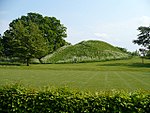St Peter's Church, Cambridge
Church of England church buildings in CambridgeChurches preserved by the Churches Conservation TrustGrade II* listed buildings in CambridgeGrade II* listed churches in CambridgeshireUse British English from February 2023

The Church of St Peter is a redundant Church of England (Anglican) church in Cambridge, in the Parish of the Ascension of the Diocese of Ely, located on Castle Street between Honey Hill and Kettle's Yard. The church is now in the care of the Churches Conservation Trust.The church is usually open and sometimes hosts art exhibitions in cooperation with the Kettle's Yard gallery.
Excerpt from the Wikipedia article St Peter's Church, Cambridge (License: CC BY-SA 3.0, Authors, Images).St Peter's Church, Cambridge
Castle Street, Cambridge
Geographical coordinates (GPS) Address Nearby Places Show on map
Geographical coordinates (GPS)
| Latitude | Longitude |
|---|---|
| N 52.211055555556 ° | E 0.11388888888889 ° |
Address
Castle Street
CB3 0AQ Cambridge
England, United Kingdom
Open on Google Maps








